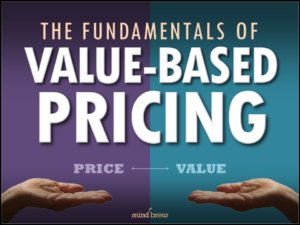Sometimes vendors and consultants talk about value pricing as if it were a brand new – and very complicated – concept. But the truth is, value pricing has really been around for millennia.
Consider the first dairy farmer who discovered cheese. Archeologists tell us it was likely an Egyptian farmer who lived at least 7,200 years ago and was transporting milk in a container made from an herbivore’s stomach. That stomach contained the necessary bacteria to transform the liquid milk into cheese.
Suddenly, this farmer had a product that seemed much more valuable to the people with whom he was trading. When it was stored as cheese, milk could last for months or years rather than just a few days. The raw ingredient – the milk – remained essentially the same, but the Egyptian had discovered a way to dramatically change its value in the minds of his customers. He was likely able to get much more in trade for his milk that he would have otherwise.
You can imagine something very similar happening with the first person who discovered how to create whisky. People were cooking up and distilling plants for use as perfume possibly as early as 2,000 B.C. But no one thought to apply distillation to wine until Italians in the 13th century gave it a try. And it wasn’t until the 15th century that Irish and Scottish monks discovered a way to add value to their grains by distilling it into whisky. They sold their alcohol as medicine and also produced large quantities for the kings of Scotland and England. Again, the raw ingredient – the grain – had become much more valuable because of how people perceived it.
The value that these early entrepreneurs discovered continues today. Modern cheesemakers and whisky distillers sometimes command prices for their products that are 100 times greater than the prices of the raw ingredients.
Of course, most companies aren’t in the position to develop new products that are as revolutionary as the discoveries of cheese and whisky.
However, the principle that value resides in the mind of your customer continues to hold true. Cheese and whisky are only more valuable than milk and grain because of the way that buyers perceive the products.
And modern companies have a number of different techniques at their disposal for increasing the perceived value of their products. The webinar The Fundamentals of Value-Based Pricing explores this concept in greater detail and details a four-step value-based pricing process that can help increase the prices that people are willing to pay for your goods and services.
You should also check out the tutorials on Exposing Your Differential Value Step-by-Step and Seven Steps to Identify and Capture Your Value. Both are filled with very practical advice for how to execute a value-based pricing initiative in a B2B environment.
We recommend enjoying all three resources along with plenty of cheese and Scotch to serve as inspiration for your own value-pricing project.
















